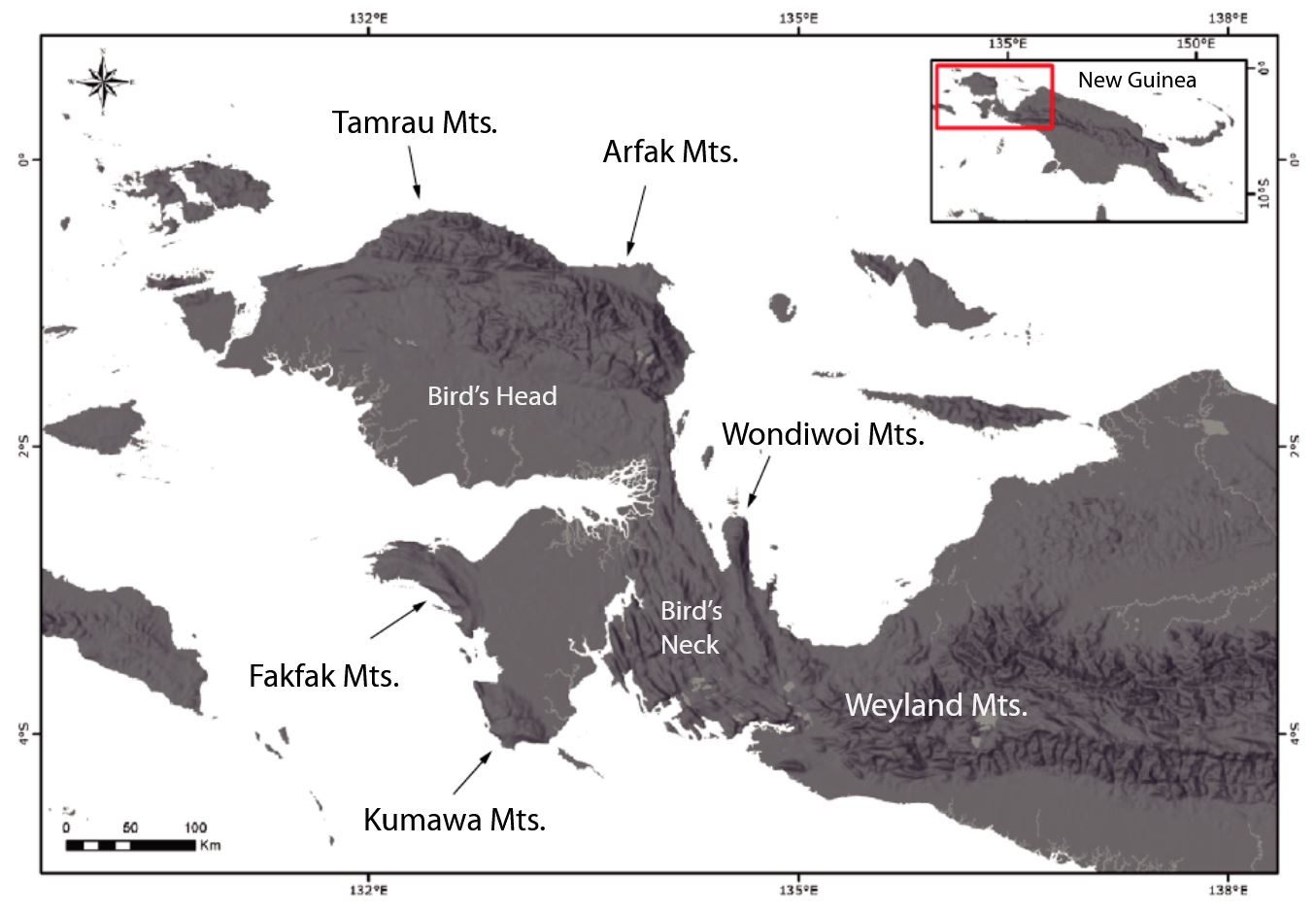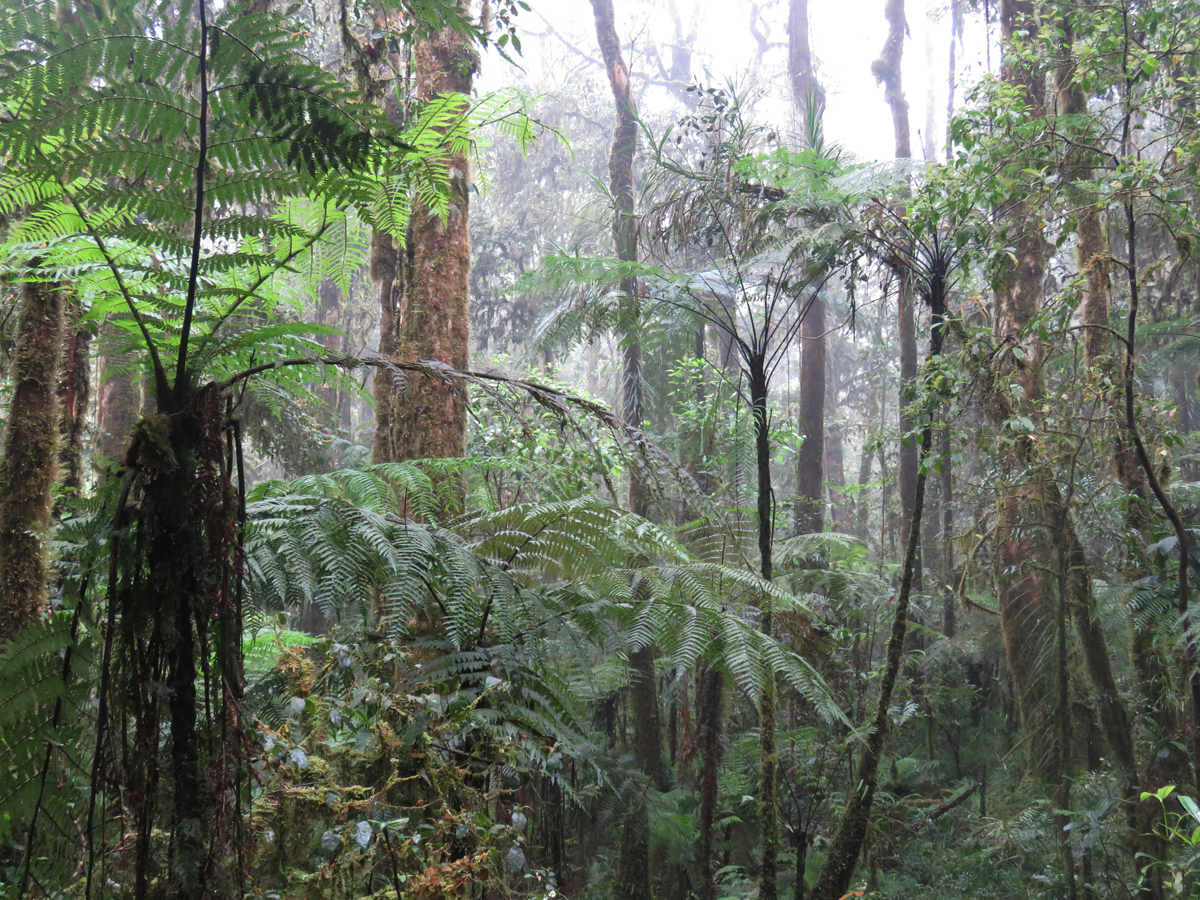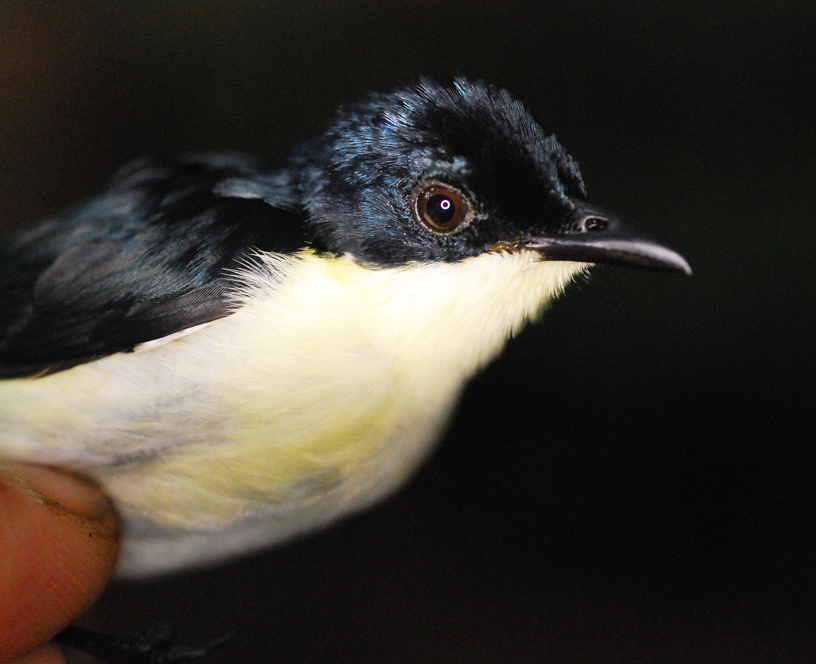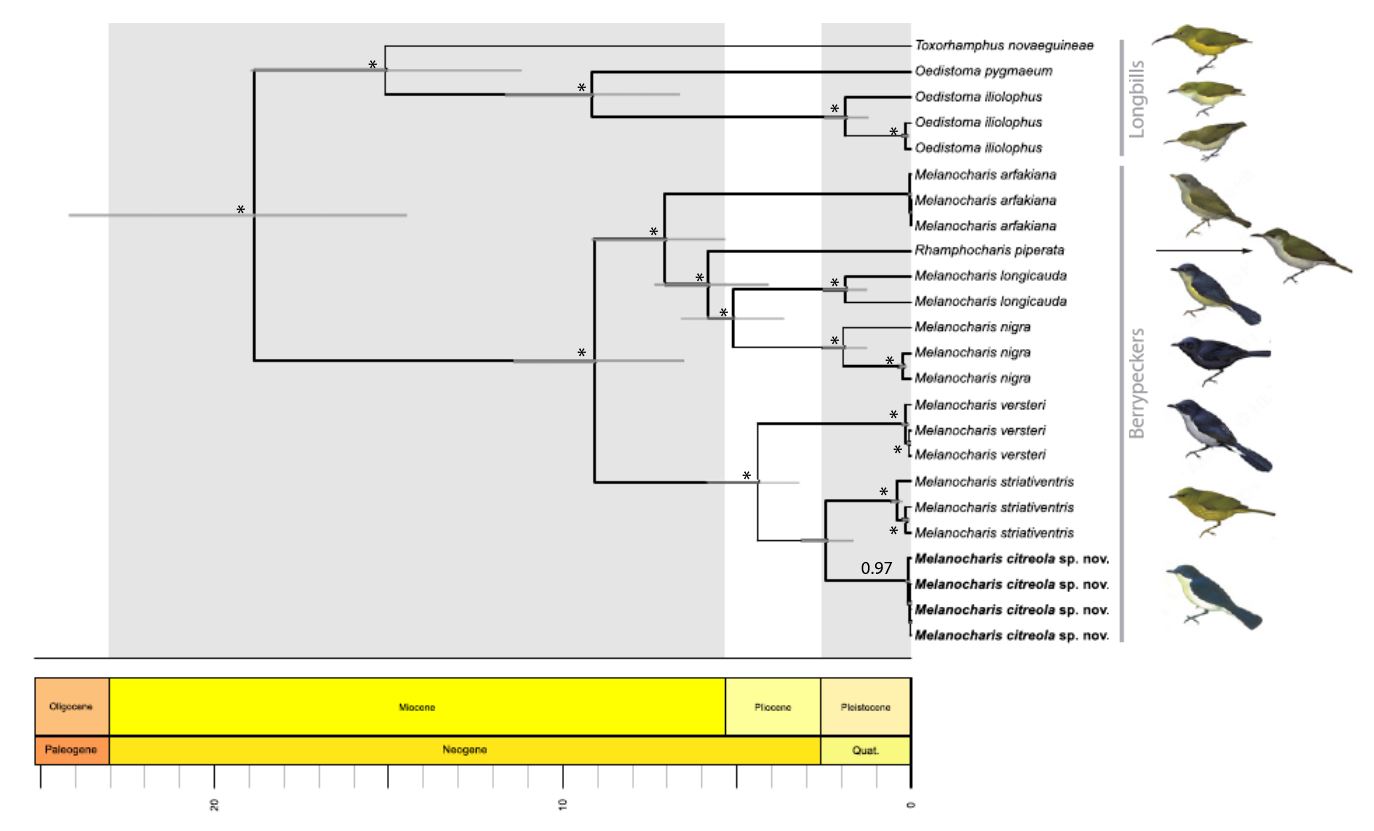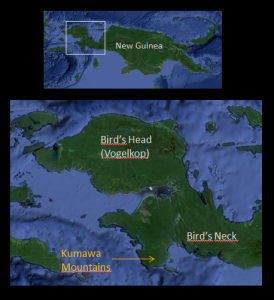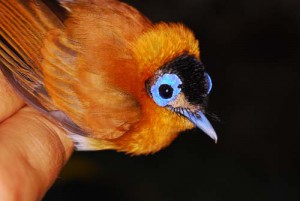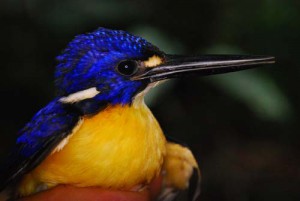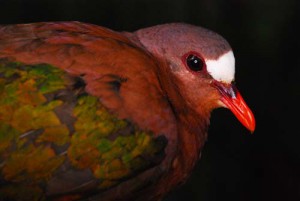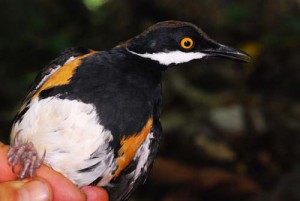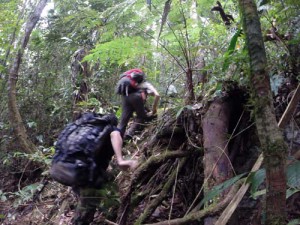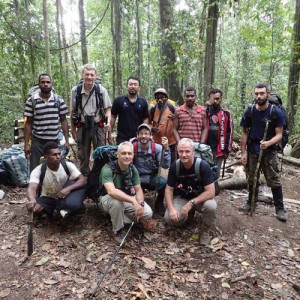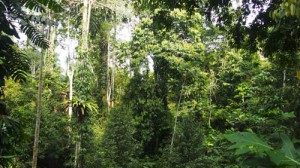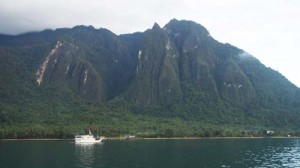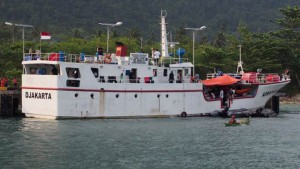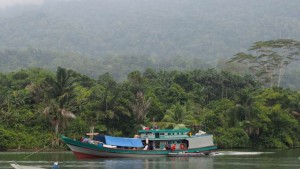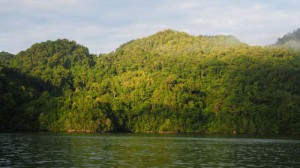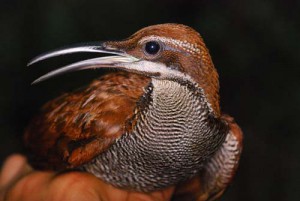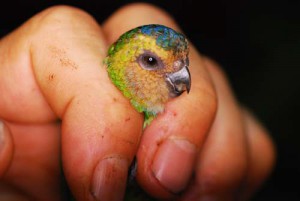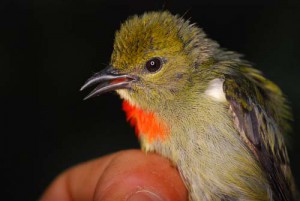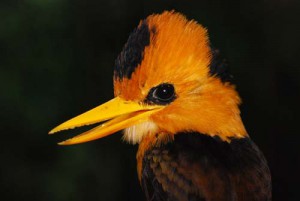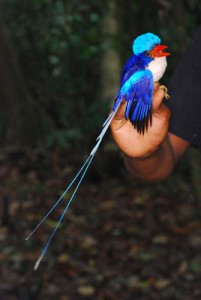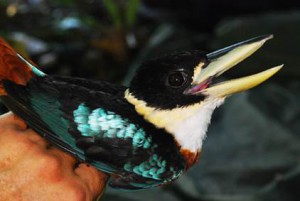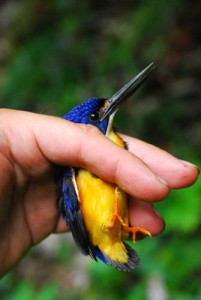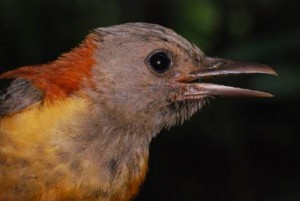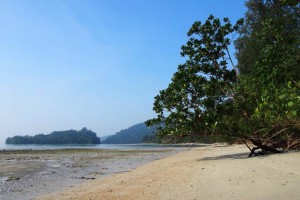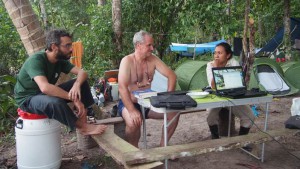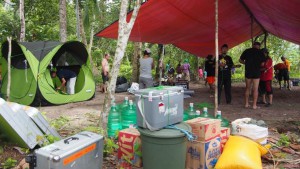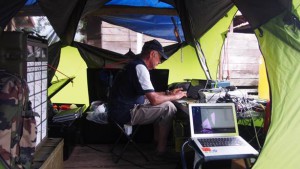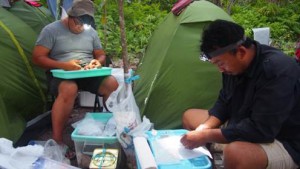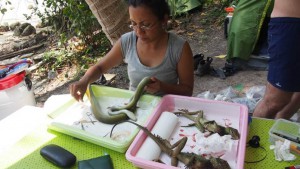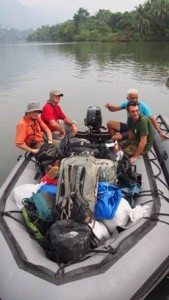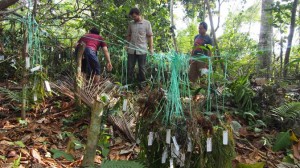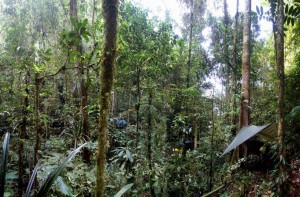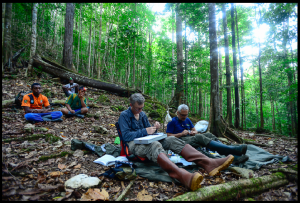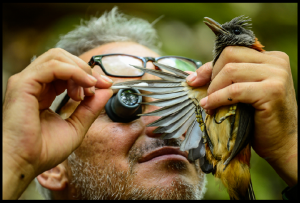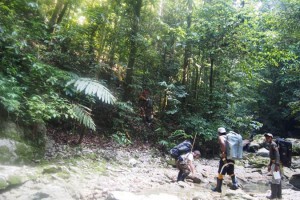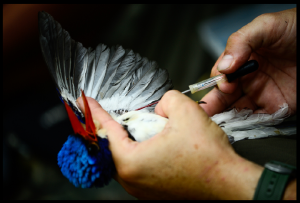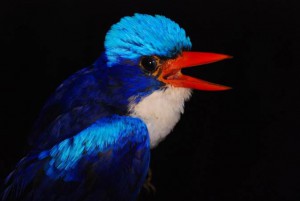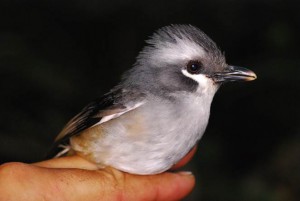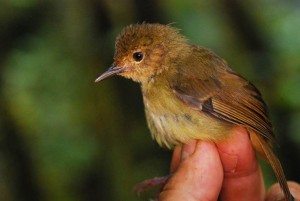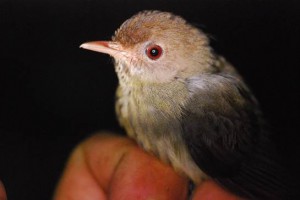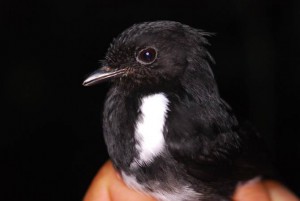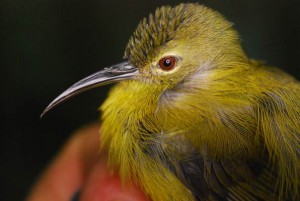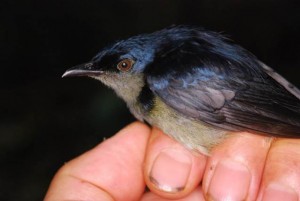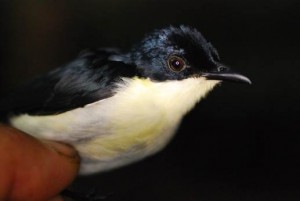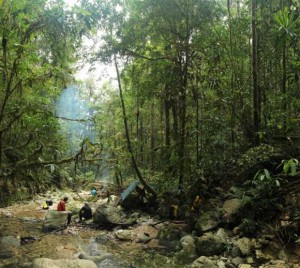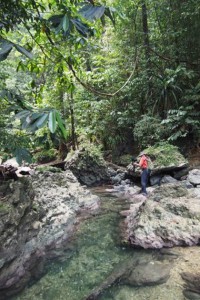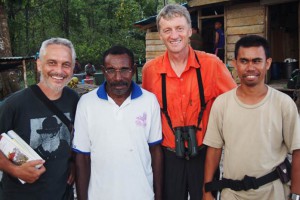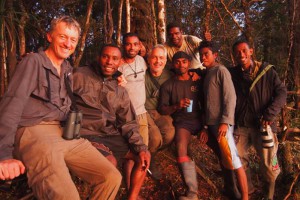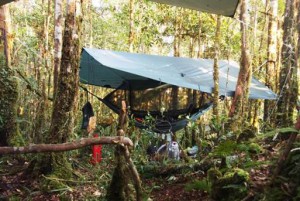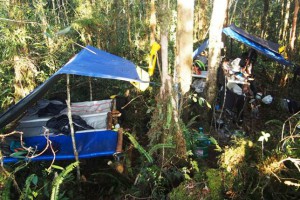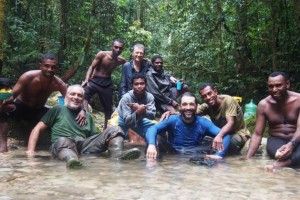The island of New Guinea includes some of the least explored areas of the planet. We collaborate with Christophe Thébaud at the University of Toulouse, France, and Hidayat Ashari at the Museum Zoologicum Bogoriense – LIPI at Cibinong, Indonesia, to study the biogeography and systematics of select avian groups from this fascinating part of the world. In 2014 and 2017 we joined two expeditions to Lengguru, New Guinea’s Bird’s Neck region in West Papua (see link to a full documentary below). The expeditions were led by the French Institut de la Recherche pour le Développement (IRD), and we had the opportunity to explore the Kumawa Mountains, a remote mountain range that had been previously visited only by Jared Diamond in the early 1980’s. Here is a map of the region:
During our expedition to the Kumawas we sampled understory birds using mist-nets at an elevation of 1200 m, in a magnificent, completely undisturbed cloud forest full of mosses and arborescent ferns. Here is a photo of the forest:
While working at this elevation, we were lucky to capture a new species of berrypecker (genus Melanocharis, family Melanocharitidae) that had not been described before. It is apparently similar to birds observed by David Gibbs in the nearby Fakfak Mountains in his 1994 expedition. We have now published the description of this exciting new species in the ornithological journal Ibis, and the article is freely accessible here. Here is a portrait of the new species, which we have named Melanocharis citreola, Satin Berrypecker in English, and Picabayas satinado in Spanish:
Although based on some plumage traits we thought this species would be closely related to Melanocharis longicauda, the Mid-mountain Berrypecker, our phylogenetic analyses based on genetic markers from across the genome have shown that it is in fact sister to Melanocharis striativentris. Here is a Bayesian inference phylogenetic tree showing relationships in the family Melanocharitidae, composed of berrypeckers and their close relatives the longbills:
Despite setting up nets for a total of 27 days in the Kumawas, we did not manage to capture or observe the female of the species, and we only captured four males, two adults and two immatures. We are planning a new expedition to learn more about this little known species from one of the most remote places on earth.
Check out this short home-made video of the 2017 expedition, showing the amazingly pristine lowland and cloud forests in the Kumawa Mountains:
Related publications:
Milá, B., J. Bruxaux, G. Friis, K. Sam, H. Ashari, C. Thébaud. 2021. A new, undescribed species of Melanocharis berrypecker from western New Guinea and the evolutionary history of the family Melanocharitidae. Ibis, 163(4): 1310-1329. PDF
Arida, E., H. Ashari, H. Dahruddin, Y. Sulistya Fitriana, A. Hamidy, M. Irham, Kadarusman, A. Riyanto, S. Wiantoro, M. Syamsul Arifin Zein, R. K. Hadiaty, Apandi, F. Krey, Kurnianingsih, E. H. P. Melmambessy, Mulyadi, H. L. Ohee, Saidin, A. Salamuk, S. Sauri, Suparno, N. Supriatna, A. M. Suruwaky, W. Tri Laksono, E. L. Warikar, H. Wikanta, A. M. Yohanita, J. Slembrouck, M. Legendre, P. Gaucher, C. Cochet, E. Delrieu-Trottin, C. Thébaud, B. Milá, A. Fouquet, A. Borisenko, D. Steinke, R. Hocdé, G. Semiadi, L. Pouyaud and N. Hubert. 2021. Exploring the vertebrate fauna of the Bird’s Head Peninsula (Indonesia, West Papua) through DNA barcodes. Molecular Ecology Resources, 21:2369-2387.
Bruxaux, J, M. Gabrielli, H. Ashari, R. Prys-Jones, L. Joseph, B. Milá, G. Besnard, C. Thébaud. 2018. Recovering the evolutionary history of crowned pigeons (Columbidae: Goura): implications for the biogeography and conservation of New Guinean lowland birds. Molecular Phylogenetics and Evolution, 120:248-258.
